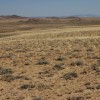How ranchers make ends meet in the twenty-first century
From a distance, Kent Price looks like any other young rancher working cattle. He eases up into the saddle on a chill morning in Wyoming’s Green River Valley, and gently wheels his horse to face the cattle bunched at the west end of the meadow below Trappers Point.
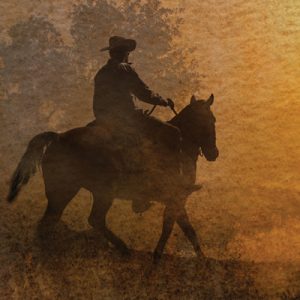 Price is part of the Green River Drift, one of the oldest, longest cattle drives in North America still done on horseback. Every year, ranches down the valley near Pinedale, Wyoming, pool their cattle and drive them high up into the Wind River Mountains. Dudes vacationing in the Pinedale area sometimes ride along on the easier stretches of the drive, which for some ranches is over 100 miles long. When the dudes see Price trotting along by himself, breath pluming, lips moving, they might well think he’s just another lonesome cowboy singing to his cattle.
Price is part of the Green River Drift, one of the oldest, longest cattle drives in North America still done on horseback. Every year, ranches down the valley near Pinedale, Wyoming, pool their cattle and drive them high up into the Wind River Mountains. Dudes vacationing in the Pinedale area sometimes ride along on the easier stretches of the drive, which for some ranches is over 100 miles long. When the dudes see Price trotting along by himself, breath pluming, lips moving, they might well think he’s just another lonesome cowboy singing to his cattle.
But Price is not singing. And though cowboying can be lonely, he’s not talking to himself, either. On closer inspection, you’ll notice an earpiece hooked over his right ear.
He’s working the phone to sell waste-water management systems for a company out of Minnesota. Welcome to 21st century ranching.
“With technology today, that’s what makes it possible to do the two things I do, the ranching and the sales work,” says Price. “I can take care of almost all my emails on my phone while I’m out moving cattle. At the same time, I’m talking sales to somebody—as long as they don’t mind a little mooing in the background.”
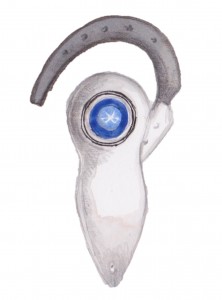 In 2008, Price moved his family—wife Dawn and their two young children—back to the ranch where he grew up, which they share with his parents, Charles and Deanne Price. In some ways, it’s a simple life, dictated by seasons and the cycles of livestock—calving, mothering, driving, fattening, shipping. But the business of ranching in the 21st century is not simple. Even the old-timers know that.
In 2008, Price moved his family—wife Dawn and their two young children—back to the ranch where he grew up, which they share with his parents, Charles and Deanne Price. In some ways, it’s a simple life, dictated by seasons and the cycles of livestock—calving, mothering, driving, fattening, shipping. But the business of ranching in the 21st century is not simple. Even the old-timers know that.
“If you think you can make a living in the cow-calf market and you just play that game and don’t do something else, it’s going to be hard to stay in business,” says Stan Flitner, whose Diamond Tail Ranch near Shell, Wyoming, has been in the family since 1906. The next generation of Flitners now run the operation, but Stan and his wife Mary still live there and stay involved. The modern rancher, he advises, must find a niche in a complex global economy. “You have to know what’s going on on Wall Street. You need to know the price of gold, the price of silver. You have to know what your neighbor’s doing, and you have to know what the Chinese are doing.”
![]()
Livestock first established in Wyoming in the second half of the 19th century, when Texas ranchers started driving big herds north for the free and abundant forage on the open range. Soon Wyoming had its cattle barons, including the famed denizens of the Cheyenne Club, often foreign-born. They loosed thousands of cattle on unclaimed public lands, much of it plains and sagebrush. When settlers began making claims under the Homestead Act of 1862—and fencing their property—the wealthy Cheyenne cowmen sent out hired enforcers to make life hard for the yeoman homesteaders.
The massive free-roaming herds were hard on the range, too, until the range got hard on them: in the devastating winter of 1887, half the cattle on the Great Plains died, and many of the well-heeled owners left town.
But the open range did not transition smoothly into fenced homesteads. The small quarter-sections awarded under the Homestead Act were not sustainable spreads in the arid West. Water was scarce and the forage too thin. The rancher who grazed livestock on ranch meadows during the summer saved no hay for winter, but if he could set the herd loose on public range, he could bale the ranch hay and hoard it for the snowy months.
 Initially, livestock feasted on public grass with impunity. But under the 1934 Taylor Grazing Act, the federal government began charging for livestock on public lands. Grazing districts were created, as well as common allotments like the one still used by the Green River Drift. The aim was to prevent over-grazing, but also to create a stable economic framework for western ranching. That purpose is cited still to justify what some critics consider to be unjustly low fees—currently $2.11 per animal per month. In 2014, the fees—then just $1.69 per animal per month—brought in $12.1 million in revenue, while the agency spent $34.3 million administering the grazing program. Noting that a great many western ranchers pay much higher fees for private land grazing, critics like activist George Wuerthner call the use of public land for livestock “welfare ranching.”
Initially, livestock feasted on public grass with impunity. But under the 1934 Taylor Grazing Act, the federal government began charging for livestock on public lands. Grazing districts were created, as well as common allotments like the one still used by the Green River Drift. The aim was to prevent over-grazing, but also to create a stable economic framework for western ranching. That purpose is cited still to justify what some critics consider to be unjustly low fees—currently $2.11 per animal per month. In 2014, the fees—then just $1.69 per animal per month—brought in $12.1 million in revenue, while the agency spent $34.3 million administering the grazing program. Noting that a great many western ranchers pay much higher fees for private land grazing, critics like activist George Wuerthner call the use of public land for livestock “welfare ranching.”
Ranchers downplay the low fees, note the weight of regulation that comes with federal grazing permits, and emphasize the benefits of their stewardship to public lands. Indeed, it’s another way in which 21st century ranching has become a complex business, especially for those dependent on federal and state grazing leases, as so many in Wyoming are. The National Environmental Policy Act of 1970 subjected grazing permits to review for impacts on wildlife and the environment. And under the 1976 Federal Land Policy and Management Act, federal agencies must manage for “multiple use,” which includes everything from wildlife habitat to ATV tracks.
So the ranchers who used to have to themselves and their cattle vast tracts of BLM and US Forest Service land, at dollar-store cost, now have to deal with protected species like grizzly bears preying on calves, bureaucrats who decide when the grass is tall enough to be chomped by domestic ungulates, and backcountry streams which have to be kept cow-pie free for backpackers to swim in them.
In most western states, you can’t just retreat to private land, because with long winters and little moisture, it takes a lot of land to feed a steer, and half the land in a state like Wyoming belongs to the federal government. The typical Wyoming ranch is large in acreage—including leases of public and private grazing lands—but small in overall livestock numbers. A 2013 study in the journal Natural Resources found over 90 percent of the surveyed Wyoming ranches raised cow-calf pairs, at an average of 260 pairs per ranch. The median size of the ranches was 10,128 acres, though some were much bigger.
A 2014 overview of Wyoming agriculture counted 11,700 farm and ranch operations, but thousands of these operations are miniscule, with sales of less than $1000 a year. Less than a third of Wyoming farms and ranches had sales over $50,000 a year. Livestock is the state’s biggest agricultural product, by far, with cattle sales of $1.1 billion in 2014, but it’s still a small share of the state’s gross domestic product, dwarfed by the energy industry, and, to a lesser degree, by tourism and recreation.
A 2012 report by the Wyoming Department of Administration and Information gave mining 28.4 percent of the state’s GDP, while agriculture accounted for only 1.3 percent. Agriculture provides 4 percent of the state’s jobs, while the “leisure and hospitality” sector is over 10 percent. Wyoming ranchers echo the agriculture community all over the country when they cite the livestock industry’s role in feeding the world, or the nation, though Wyoming’s ranking among states, despite the cowboy and bronc on state license plates, is only 35th nationally.
That can be a factor when public land managers balance grazing against competing uses of the commons. Ranches are not, in an economic sense, “too big to fail,” so they must defend their use of public resources in other ways; for instance, as protectors of the open spaces that tourists and recreationists and wildlife advocates want, and the embodiment of cultural values nurtured by their increasingly rare way of life. That can be a heavy load on horseback. Geographer Paul Starrs, author of Let the Cowboy Ride, calls the public land conundrum “our figurative Scarlet A, a badge variously of courage and shame and fortitude.”
![]()
It’s tempting to echo the doomsayers who have long seen ranching—particularly the family-size operations romanticized in the West—as outmoded and unfitted to the 21st century. Ranchers themselves bemoan, often with a little smile, their backbreaking, debt-ridden, money-losing enterprises far out on the margins of today’s urbanized world. But if that’s to be the theme of an essay on ranch economics, we might have picked a better time.
Because, in fact, it’s been a great decade for the beef industry. The commodity prices for steers have climbed dramatically—Oklahoma City sales of 500- to 600-pound steers in 2015 reached an unheard of $249.92 per hundred pounds of animal, more than doubling in a decade. Lee Schulz, an agricultural economist at Iowa State University who compiled those figures, says it’s meant “historic profitability” for cow-calf operators.
In addition, while it’s not easy, the work is not nearly as hard as it was just a couple of generations ago. Equipment and technology have put ranchers at haying time in an air-conditioned cab listening to George Strait. Technology keeps ranchers better in touch with the world outside, and allows them to monitor the range and livestock remotely when they’re away. “It’s not the babysitting job it used to be,” says Doug Miyamoto, the head of Wyoming’s Department of Agriculture. “People have a much greater desire to be engaged in community activities and socialization than they did a decade ago.”
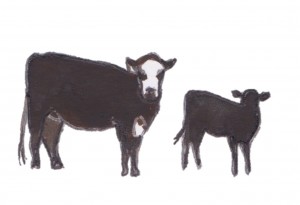 A decade of prosperity and improving technology has quieted fears that a younger generation will disdain the hardship of life on the ranch. “It’s become more attractive, it really has,” says Jon Kirkbride, of the Harding & Kirkbride Ranch northeast of Cheyenne. “Really, there’s never been a shortage of young people wanting to come back, only now they can make a living at it.”
A decade of prosperity and improving technology has quieted fears that a younger generation will disdain the hardship of life on the ranch. “It’s become more attractive, it really has,” says Jon Kirkbride, of the Harding & Kirkbride Ranch northeast of Cheyenne. “Really, there’s never been a shortage of young people wanting to come back, only now they can make a living at it.”
But Miyamoto, along with economists, historians, and ranchers themselves, warns that, for the younger generation to make a go of it, ranching today has to be more than just a bucolic life among cows and calves and steers. The past decade of cattle ranching prosperity is something of an anomaly (in fact, livestock sale prices are down substantially in 2016); going forward, successful ranchers will have to modernize, adjust and diversify, or perish.
“You’ve got to look to the future,” says Stan Flitner, “and see what’s coming down the pike. And you’ve got to move fast.”
![]()
Many ranchers have advanced formal educations, which can be useful in today’s government-regulated, paperwork-laden world. Kent Price has a degree in mechanical engineering, and his father Charles is a nuclear engineer who once worked for the Department of Energy at the Hanford Site in Idaho. Albert Sommers, a rancher who acts as foreman for the Green River Drift cattle drive, becomes a range scientist every year when he goes out with Forest Service officials to assess the forage on the drift allotments, crucial data that drives the timing and duration of cattle on public lands. Says Sommers, “Ranchers always had an understanding of range science, only it was from the back of a horse. Now you need to be able to talk the lingo and walk the walk and prove from a study perspective what you’re doing is right.”
In addition to range science fluency, ranchers must master reams of regulatory paperwork. “You almost need to have an H.R. [human resources] person on a ranch these days,” says Jim Magagna, executive vice-president of the Wyoming Stock Growers Association. They also need to have Magagna, and others like him, to lobby and help them make their case to elected officials, who are under increasing pressure from conservationists and other public land users, some of whom carry the “cattle free” banner in public land debates.
“The ranchers have to tell their story better,” says Miyamoto of the Wyoming Department of Agriculture. “That without agriculture, wildlife habitat doesn’t exist, those open spaces don’t exist, the culture doesn’t feel the same.” Lesli Allison, executive director of the Western Landowners Alliance, finds it ironic that wildlife concerns might push livestock off public lands, when ranches’ private lands, mostly along waterways in fertile valleys, “are the most biologically productive portions of the landscape, supporting the majority of (wildlife) species.”
Without public land grazing, most ranches “can’t make a living off those lands,” adds Allison, “and they get subdivided.” And subdivisions, everyone agrees, are much more an enemy of wildlife and open space than livestock.
![]()
Making a living off those lands without subdividing, though, means surviving the ups and downs of beef prices at the Oklahoma City auctions, and that requires a new business acumen on the ranch. Kent Price’s sales work on horseback of waste management systems is just one of the ways that ranchers are diversifying their income streams. Some of the resources are familiar, but there are surprises, too.
“Over the years, we’ve gotten some income from oil leases,” says Jon Kirkbride, “from wind power leases, and from the dinosaur thing. There’s all sorts of leases that provide various sorts of income.”
When ranchers start thinking creatively about something other than cows and calves, they find lots of ways to monetize a ranch. But let’s start with cows and calves, because that part of the business, too, is diversifying in all sorts of ways.
Partly, that’s driven by consumers.
Shoppers at the grocery store meat counter, notes Jim Magagna of the Stock Growers, “actually ask about sustainability.” They want to know if the beef was grass-fed rather than fattened in feed lots, if antibiotics and hormones were avoided, and if the ranchers take good care of habitat, “and if you meet that test, your market enlarges.” Ranchers who once aimed primarily for quantity—big steers—can now choose markets that focus on quality. Specialty breeds, organic methods, and sustainable practices allow producers to “meet the emerging markets concerned about food health and the environment” according to research published in Rural Sociology. Those consumers—shopping at national chains like Whole Foods—will pay close to twice as much per pound for meat that’s label-certified to meet standards of sustainability and health. The growing appetite for “grass fed” beef is an obvious opportunity for Wyoming ranchers, according to Magagna.
Technology, too, makes it easier for today’s rancher to diversify the customer base. Instead of the local sale barn, or the buyer who comes to the ranch, you can go on the internet and sell to buyers afar.
Of course, it’s no easy thing for a small Wyoming operator to track international markets, meet rigorous certification standards, or move nimbly enough to keep up with changing tastes. The biggest hindrance, Magagna points out, is that Wyoming lacks a federally licensed beef processing plant, which would make it simpler to assure the “purity” of Wyoming grass-feed beef. For now, beef sold out of state has to leave on the hoof, to feed lots and processing plants elsewhere.
![]()
Generating income from land besides grass for cattle—even land that homesteaders once dismissed as unproductive—may also be just a matter of identifying previously overlooked values. Cell towers need sites in the country, and they pay rent. Oil and gas and coal leases are not new phenomena, but the amounts paid for them in recent years are newly large, and have put some ranchers on easy street.
As alternative energy resources replace fossil fuels, and new technologies come into play, new opportunities arise for landowners. A number of ranches in southeast Wyoming lease to wind energy developers, while the cattle graze beneath the turbines.
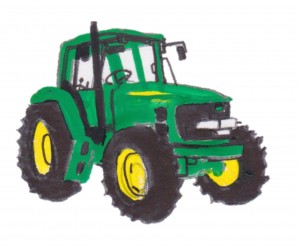 Remember the dudes riding along on the Green River Drift? They came to Wyoming looking for a little more than just a placid trail ride and a pretty sunset. Miyamoto calls it “agri-tourism”: “People want to experience agriculture. They want to see how food is raised.” And while they may not have the skills to rope and doctor, or move a stubborn bull out of the trees, it’s a pretty sweet deal when someone pays a rancher to work a short shift as a drive hand, rather than the other way around. Visitors are also interested in the history of ranching; Jonita Sommers, Albert Sommers’s sister, has opened a living history museum on the ranch, a popular spot for school tours. A ranch near a population center or a popular tourist destination can offer its buildings for weddings and other special events.
Remember the dudes riding along on the Green River Drift? They came to Wyoming looking for a little more than just a placid trail ride and a pretty sunset. Miyamoto calls it “agri-tourism”: “People want to experience agriculture. They want to see how food is raised.” And while they may not have the skills to rope and doctor, or move a stubborn bull out of the trees, it’s a pretty sweet deal when someone pays a rancher to work a short shift as a drive hand, rather than the other way around. Visitors are also interested in the history of ranching; Jonita Sommers, Albert Sommers’s sister, has opened a living history museum on the ranch, a popular spot for school tours. A ranch near a population center or a popular tourist destination can offer its buildings for weddings and other special events.
Tourism is a small economic niche, but a niche nevertheless. And while many full-time ranchers aren’t interested in running a bed and breakfast or a trail-ride service, outfitting hunters has a venerable place in the ranching world of the West. Guests will pay big for private hunts, either on the ranch or on adjacent public lands, using the ranch’s horses and gear and the hard-won local knowledge of where to find success. The Flitners started outfitting hunters from their ranch near Shell when they were still deep in debt, and while it didn’t create a huge income stream, Stan Flitner says, it “made the banker think, you know, this guy will do anything within reason, and do it well.”
A hunting operation encourages good stewardship of wild game around a ranch. “There’s an opportunity there for ranchers,” says Albert Sommers. “The wildlife on your place can be a resource from a perspective of hunting or a perspective of conservation.” The health of that game—the elk, the mule deer, the sage grouse, and other species—may prove even more valuable in the form of conservation easements and mitigation banks.
Some call such ranches’ provision of wildlife habitat “ecosystem services.” The Nature Conservancy gets most of the press, but non-profit groups are proliferating, like the Wyoming Stock Growers Land Trust and the Green River Valley Land Trust, which purchase or accept donated easements that protect rural land and key wildlife habitat from fences, subdivisions, invasive species, and other forms of habitat degradation.
The Sommers Grindstone Conservation Project is a prime example. It protects 19,000 acres in a key area along the Green River. For the Sommers Ranch and neighbor Maggie Miller’s Grindstone Cattle Company, it helps assure that lands remain in cattle ranching, whatever future pressures may develop. For conservationists, it protects key habitat for mule deer and sage grouse and other species. For energy companies involved in massive oil and gas development nearby, it provides a place to park some of their enormous profits and show the world—particularly state and federal regulators—that they are mitigating impacts.
Magagna and the Stockgrowers are also working to create the Wyoming Conservation Exchange, a sort of marketplace that will let energy companies “buy” conservation on ranches to offset the impacts of drilling elsewhere. Such mechanisms are at the front lines of open space conservation. A group that bought the Pathfinder Ranch is now angling to create a huge “mitigation bank” with its property along the Sweetwater and North Platte Rivers, to be paid for by energy developers. Since they came into the state to build a huge wind farm, it’s not about preserving the family ranch, but it is, potentially, an economically viable means of keeping open space away from the subdividers and preserving habitat.
“There’s been a lot of outside money coming back into agriculture,” notes Jon Kirkbride, “because the land’s been a pretty good investment, and they need to park the money.”
Older ranch families worry about newcomers, particularly “hobby” ranchers, who may deploy just enough livestock to maintain agricultural status for tax reasons, but don’t have generations of sweat equity in ranching. But Allison of the Western Landowners Alliance notes that even absentee owners “keep lands open, and create jobs, because those landscapes have to have managers on them.”
![]()
Author Sam Western labels it “Wyoming’s deepest mythology”: the small independent rancher. But mythology is not the path to survival. In fact, there is no single path. Diversification is a long and lengthening list.
 Despite economic stress, environmental concerns, and real estate pressures, ranchers in Wyoming are upbeat. They’re exploring new markets, improvements in technology and equipment, niche products, and smart ways of diversifying to derive income from open space and wildlife habitat. They’re learning as they go, and, in that sense, tradition and experience continue to matter.
Despite economic stress, environmental concerns, and real estate pressures, ranchers in Wyoming are upbeat. They’re exploring new markets, improvements in technology and equipment, niche products, and smart ways of diversifying to derive income from open space and wildlife habitat. They’re learning as they go, and, in that sense, tradition and experience continue to matter.
“One advantage I had, and my son had, is we’ve been here for five generations,” said Stan Flitner, at the Black Tail Ranch. “I tell him, ‘I’ve made every mistake you can make, and all you have to do is look at me and listen.’ The mistakes I haven’t made, my father taught me; and his father taught him.”
The future for livestock in Wyoming looks surprisingly bright.
By Geoffrey O’Gara
Geoffrey O’Gara writes and produces films from his home in Lander, Wyoming.


